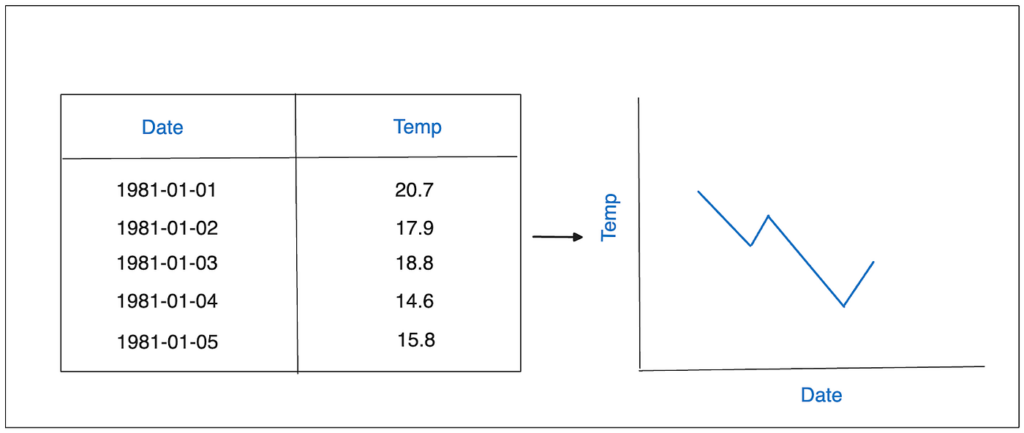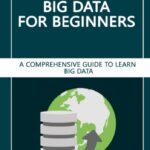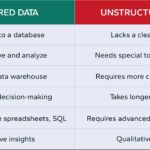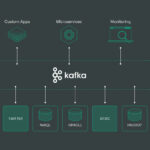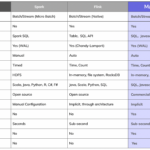Time series data, which consists of observations recorded over time at regular intervals, plays a crucial role in big data forecasting. In recent years, the advent of time series embeddings has revolutionized the way we analyze and forecast such data in the realm of big data analytics. Time series embeddings involve transforming sequential data into numerical representations that capture the underlying patterns and relationships present in the time series. By leveraging these embeddings, big data analysts can extract valuable insights, make accurate predictions, and effectively manage large volumes of time series data. This article explores the significance of time series embeddings in enhancing forecasting accuracy and efficiency within the context of big data analytics.
In the realm of big data, accurately predicting future trends and behaviors is crucial for businesses and researchers alike. One of the most effective approaches in forecasting outcomes is through the use of time series embeddings. These embeddings have gained popularity due to their ability to represent temporal data in a way that captures underlying patterns and relationships.
Understanding Time Series Data
Time series data consists of a sequence of data points recorded or measured at successive points in time. It is often used in domains such as finance, economics, and environmental sciences. The fundamental challenge with time series data is its inherent temporal dependency. Traditional methods may struggle to model this dependency efficiently, which is where time series embeddings come into play.
What Are Time Series Embeddings?
Time series embeddings are continuous vector representations of time series data that capture temporal dynamics in a lower-dimensional space. These embeddings allow models to learn more effectively from the data by creating a compact numerical representation that preserves important features. By transforming the complex and high-dimensional nature of time series data into a more manageable form, we can enhance the performance of forecasting algorithms.
The Importance of Embeddings in Big Data
With the explosion of data generated in recent years, notably in the era of big data, conventional data processing techniques have become insufficient. Here are some significant reasons why time series embeddings are vital in the big data landscape:
- Dimensionality Reduction: Time series embeddings help reduce the dimensionality of large datasets, which is crucial in big data applications where computational resources are limited.
- Feature Extraction: They facilitate the extraction of meaningful features from raw data, enabling predictive models to focus on the most relevant aspects of the data.
- Enhanced Computational Efficiency: By using embeddings, the performance of machine learning algorithms improves significantly, resulting in faster processing times and reduced training durations.
- Scalability: As data volumes continue to grow, embeddings provide a scalable solution for handling increasingly complex datasets.
Techniques for Generating Time Series Embeddings
Multiple techniques exist for generating time series embeddings. Here are a few widely used methods:
1. Deep Learning Models
Deep learning architectures, particularly Recurrent Neural Networks (RNNs) and Long Short-Term Memory networks (LSTMs), excel at capturing the sequential nature of time series data. These models can learn to generate embeddings by training on entire sequences, thus creating a representation well-suited for forecasting tasks.
2. Autoencoders
Autoencoders offer a powerful way to generate embeddings by compressing time series data into a lower-dimensional representation and then reconstructing it back to its original form. The encoding part of the autoencoder acts as an effective embedding method, allowing for efficient time series representation.
3. Time Series-Specific Embeddings
Methods such as Seasonal-Trend decomposition and Fourier transforms can also generate embeddings tailored specifically for time series applications. These methods decompose the data into seasonal and trend components, which can then be used as features in forecasting models.
Applications of Time Series Embeddings in Big Data Forecasting
Time series embeddings find applications across various domains which leverage big data for forecasting, including:
1. Financial Market Forecasting
The financial sector relies heavily on time series forecasting for predicting stock prices, market trends, and economic indicators. Time series embeddings can provide an edge by capturing complex relationships in financial data, allowing for better investment decisions and risk management strategies.
2. Energy Demand Forecasting
Predicting energy demand is essential for utilities to ensure a balanced supply. Time series embeddings can model factors such as seasonal variations, temperature changes, and consumption trends, leading to more accurate predictions and optimized resource allocation.
3. Demand Forecasting in Retail
Retailers can leverage time series embeddings to forecast product demand efficiently. This helps in inventory management, reducing holding costs, and enhancing customer satisfaction by ensuring product availability.
4. Healthcare Analytics
In healthcare, time series data plays a crucial role in tracking patient health over time. Time series embeddings enable healthcare professionals to forecast patient outcomes based on historical data, ultimately improving treatment plans and healthcare delivery.
Challenges and Considerations
While time series embeddings offer numerous advantages, there are challenges to consider, particularly in the context of big data:
1. Data Quality
The quality of time series data is paramount. Inaccuracies, missing values, or outliers can significantly impact the effectiveness of the embeddings and the subsequent forecasting results.
2. Complexity of Models
Deep learning models that generate embeddings can be complex and require significant computational resources. Organizations must weigh the benefits against the cost of implementation and maintenance.
3. Interpretability
Though embeddings can enhance performance, they often lead to a loss of interpretability. Understanding how features contribute to predictions can be critical, especially in regulated industries like finance and healthcare.
Evaluating the Effectiveness of Time Series Embeddings
To assess the effectiveness of time series embeddings in forecasting, the following metrics are commonly used:
- Mean Absolute Error (MAE): Measures the average absolute difference between predicted and actual values.
- Root Mean Square Error (RMSE): Provides a measure of the standard deviation of the prediction errors, emphasizing larger discrepancies.
- Mean Absolute Percentage Error (MAPE): Reflects the accuracy of forecasting as a percentage, which can be particularly useful for interpreting results.
- Out-of-Sample Testing: Using separate validation datasets to test the generalization capability of the model.
Future Trends in Time Series Embeddings and Big Data Forecasting
The field of time series embeddings is continuously evolving, incorporating innovations in machine learning and data science:
1. Combining Multiple Data Sources
The integration of diverse data streams, such as social media sentiment, weather data, and economic indicators, holds the potential to improve forecasting accuracy. Future embeddings may incorporate these multi-modal datasets to capture intricate relationships.
2. Real-Time Forecasting
As real-time data processing technology evolves, the ability to generate embeddings and forecasts in real-time will become more feasible, allowing businesses to make prompt and informed decisions.
3. Enhanced Interpretability Techniques
Efforts to bridge the gap between performance and interpretability are underway. Future developments may lead to more transparent models that provide insights into how embeddings influence predictions.
Conclusion
In summary, time series embeddings play a pivotal role in big data forecasting by enhancing predictive capabilities and enabling businesses to respond proactively to emerging trends. As techniques improve, the potential for time series embeddings in various applications will undoubtedly expand, redefining how we approach forecasting in the big data landscape.
Time series embeddings play a crucial role in enhancing the accuracy and efficiency of forecasting models within the realm of Big Data. By extracting meaningful representations from high-dimensional time series data, embeddings enable improved predictive capabilities and insightful analysis, ultimately driving better decision-making and outcomes in the era of Big Data.
